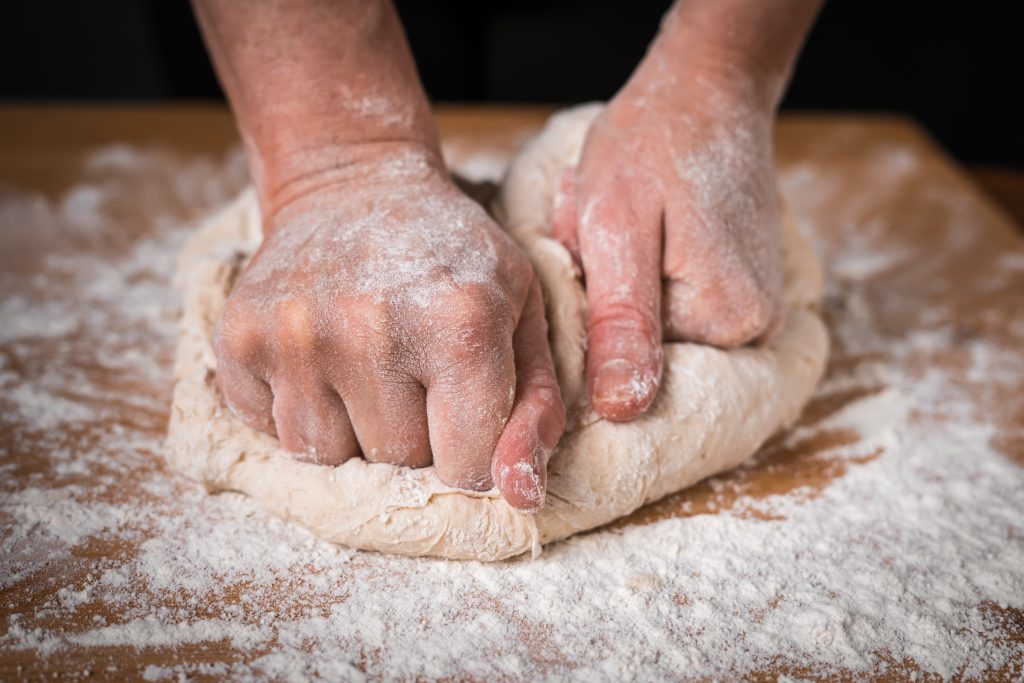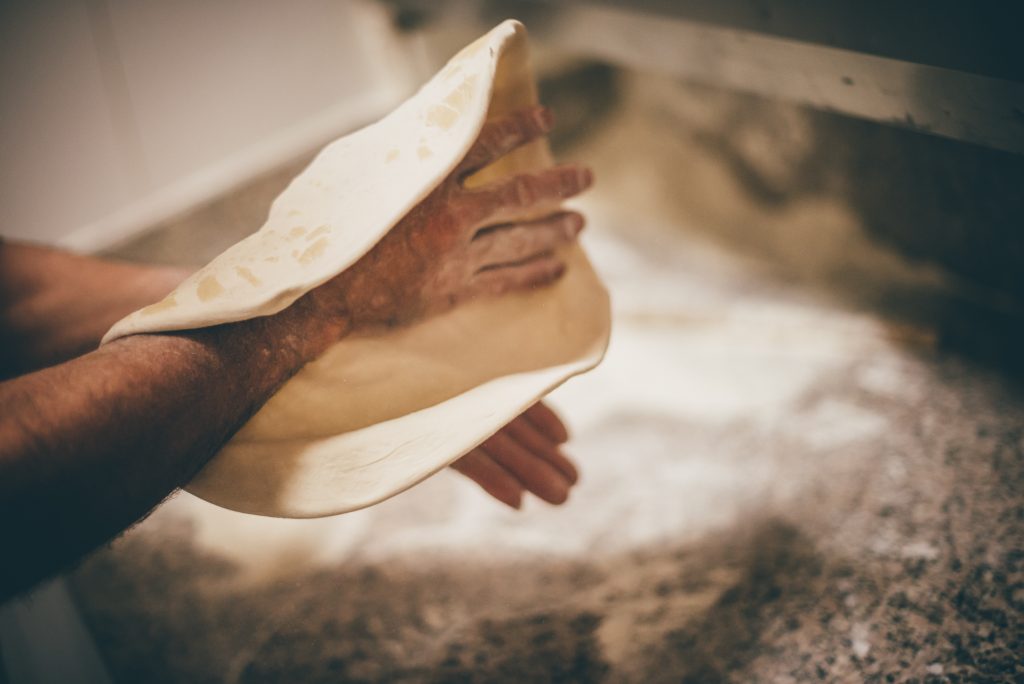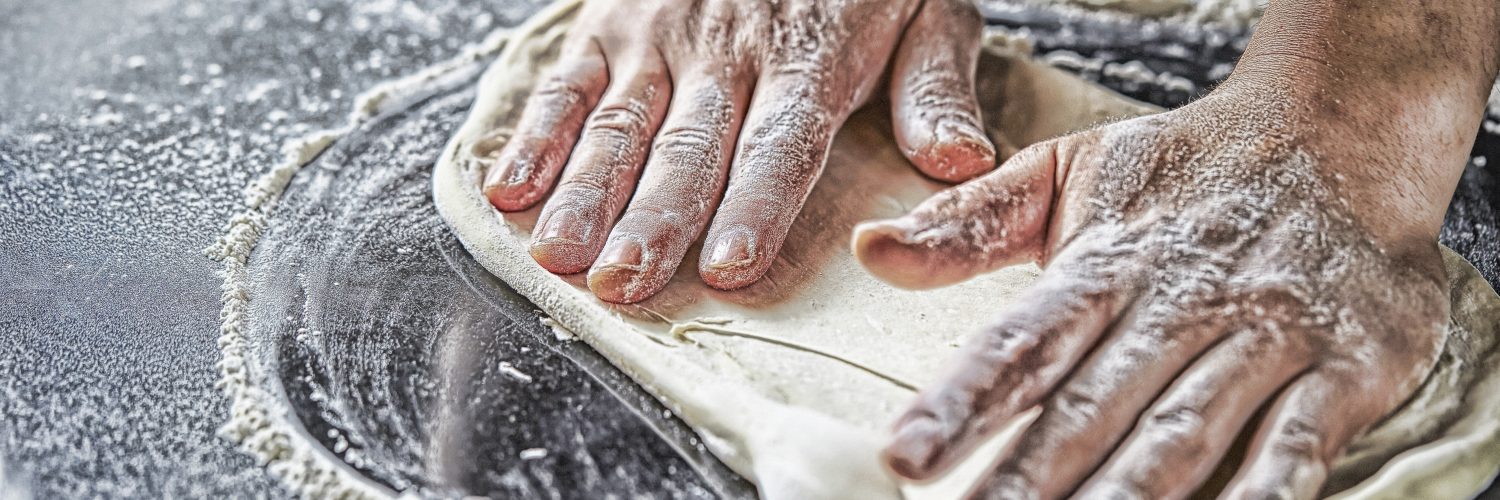Everyone should try making pizza from scratch at least once, and the first step is the dough. You might know that you need to use yeast, and you’re undoubtedly excited to toss your bases in the air. But did you know that using the right flour is equally important in making your dough?
Different types of flour offer different textures and tastes, so using the right one is crucial in getting your crust salty, chewy, and delicious. So, what is the best flour for pizza dough?

Which Flour is Best for Making Pizza Dough?
When you’re looking at different types of flour, you have to look at gluten content. Gluten is what makes bread chewy and spongy, so the more gluten something has in it, the chewier it will be.
Flour with less gluten content are known as “soft” flours, and they’re what you’d use to make pastries and cakes. Flour with a higher gluten content is known as “strong” or “hard” flour. This type of flour is used in bread.
Because a good pizza base is nice and chewy, we’re never going to suggest making it with soft flour such as cake flour! Read on for our recommendations for the perfect base for every style of pizza.
Caputo ’00’ Flour
For an authentic, Neapolitan-style pizza base, you’re going to want to get the flour from the source: Caputo is a 90-year-old flour producer straight out of Naples, Italy.
Their 00 Flour is very fine, and your dough will be stretchy and elastic, and when cooked will be chewy and soft. You can expect your crust’s edges to get puffy and a little charred in places after it’s been in the oven.
Because it comes all the way from Pizza Country, this is a more expensive option. If you’re totally committed to a Naples-style pie, complete with San Marzano tomato sauce and buffalo mozzarella, then it’s worth trying.
If, however, you prefer another style of pizza or you’re not too fussed about authenticity, then there a whole host of other cheaper flours that make for a fantastic dough.
All-Purpose Flour
You might already have this flexible flour in your pantry, and good news – it’s super tasty in a pizza base. It’s especially good for making thicker-crusted pizzas, such as a Chicago-style deep-dish pizza, or a rectangle-shaped, focaccia-style Sicilian pizza. It can tear easily when you’re making your dough, which might make it a bit hard to stretch, so be careful!
Bread Flour
This high-gluten flour is coarse, off-white, and will make your pizza super crusty. It’s perfect for a New York-style dough: a thin crust that’s crisp along the edges but nice and soft in the middle so you can fold it up. It doesn’t tear when you’re stretching it, but it may not always hold its shape when you’re flattening it out because of its high gluten content.
Gluten-Free Flour
What about if you’re gluten intolerant, but you don’t want to miss out on making your own pizza dough? Have no fear – there are options available! There are now companies that sell gluten-free pizza flour, and you’ll likely be able to find it at a health food store or online.
Alternatively, you can combine your gluten-free flour with something that will make your dough chewy. To get a chewier texture, try adding eggs (which add a protein like gluten), xanthan gum, or modified tapioca starch. Have a look online to decide what recipe you like best!

How to Make the Dough
Now that you’ve picked your perfect flour, it’s time to make the dough! Your proportions will depend on the size of the pie (or pies) you’re making, but once those are settled, you’ll simply follow this method:
- Combine water, yeast, and salt in a bowl, then stir in your olive oil.
- Add the flour, get it all mixed, and knead it for five or so minutes before covering it and letting it rest for at least two hours and up to two days.
- When your dough has risen, you get to do the fun stuff – kneading it, and, of course, tossing it in the air until it’s pizza-shaped. (Tossing the dough, by the way, isn’t just for show, but a proper technique for stretching it out while still retaining moisture!)
And that’s it! Your base is all done and ready for toppings. A great pizza starts with the dough, and a great dough starts with excellent flour. So what are you waiting for? Making pizza is fun and super tasty, so get kneading!








Add comment